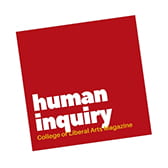Dr. Alberto Giordano, Professor in the Department of Geography, is using his expertise in cartography (map making) and geographic information systems to map the impact of the Holocaust and Holocaust survivors in Italy and Budapest. Thanks to his work, we can trace the patterns of genocide and recognize places in the world today where genocide may be imminent.
His research answers an important question: “If you look at the unfolding of the genocide at different geographical scales, what can you learn?” asks Giordano. His work allows for not only the mapping of survivors, but also the possible sites where these survivors interacted with bystanders who may not have necessarily participated in acts of violence but were witnesses.
This work emerged from an interdisciplinary and international workshop at the United States Holocaust Memorial Museum in 2007 centered around looking at how geography can shed light on the holocaust. By understanding language patterns and points of contact of genocide, and by marking these features as they relate to location and place, Giordano notes that we can begin to see patterns where similar situations may be occurring today.
“You don’t just start genocide all of a sudden. It’s a process,” he says. “There are certain places [where] they are starting to make people different than you the enemy, and that is a very dangerous path.”
The ability to recognize the locations where these patterns are emerging is a first step in preventing future genocidal events.
